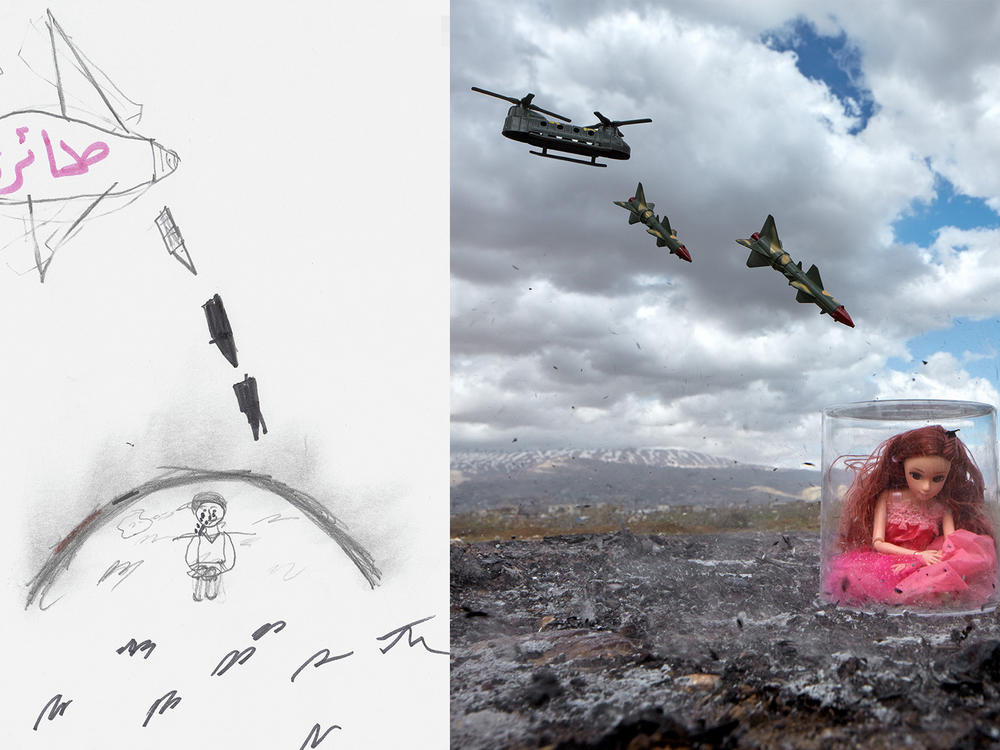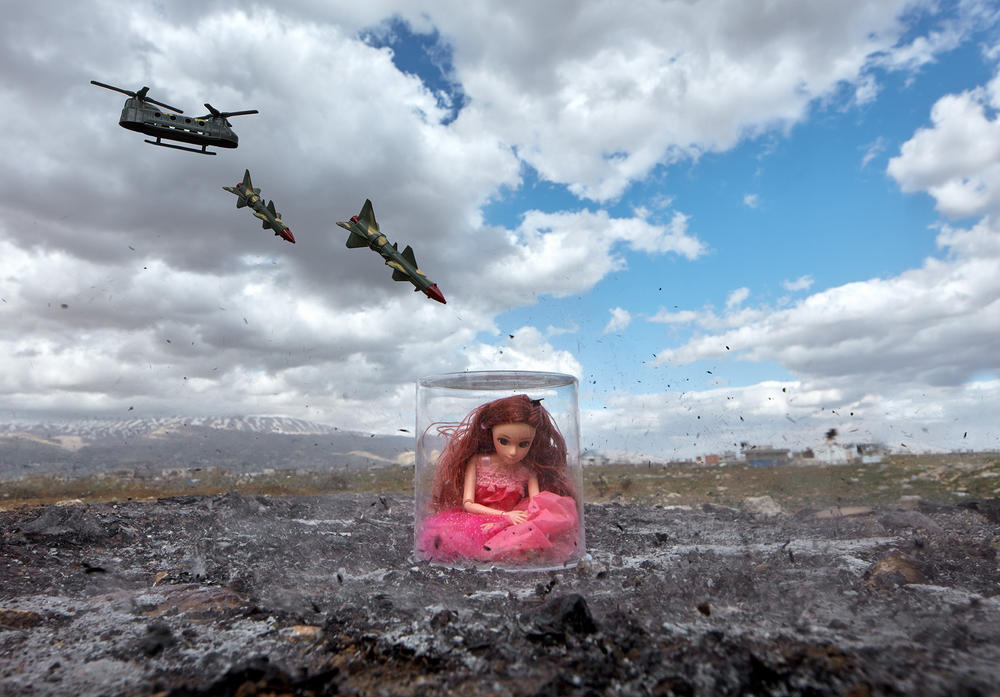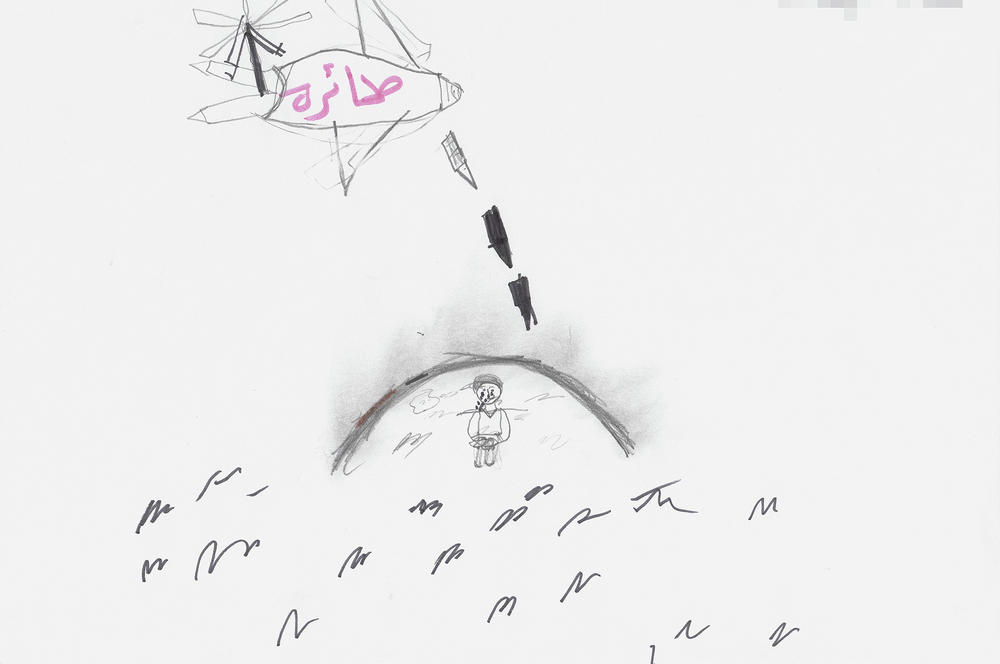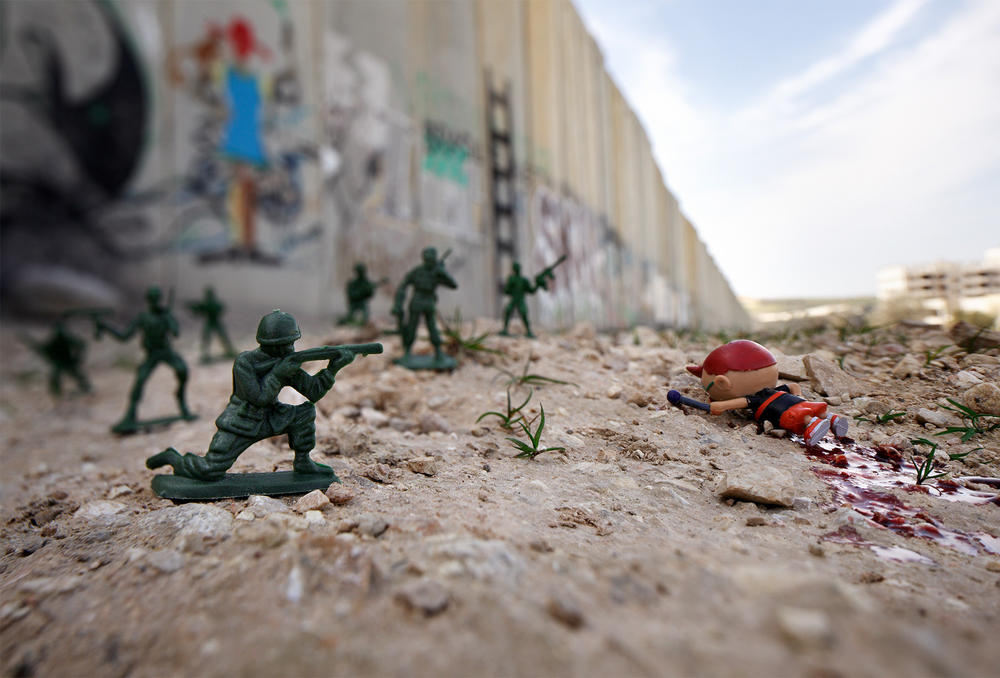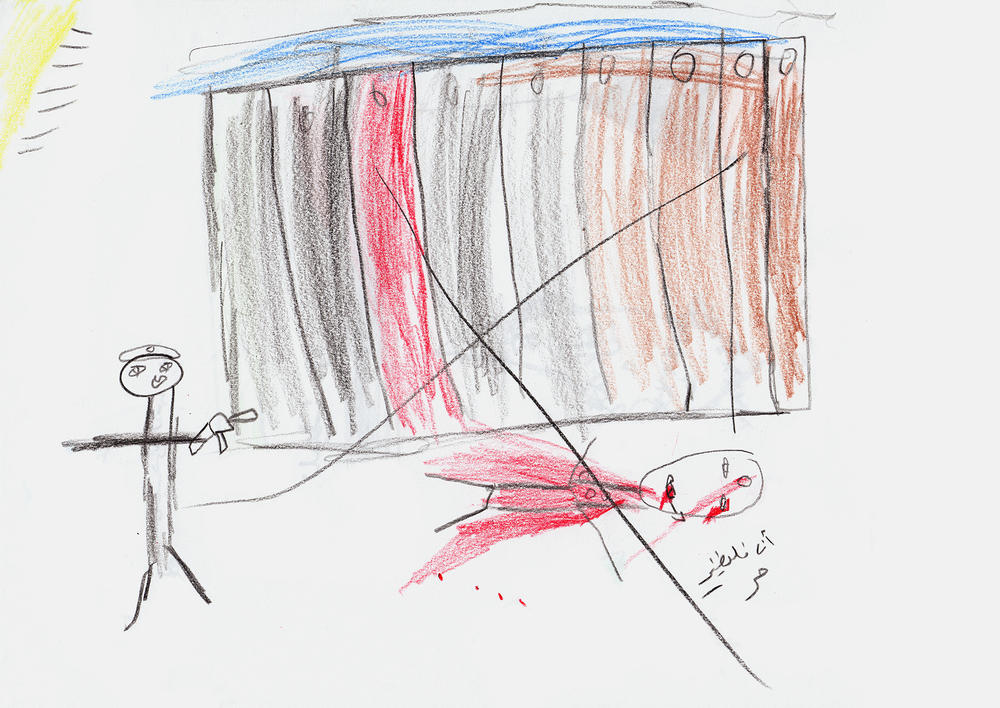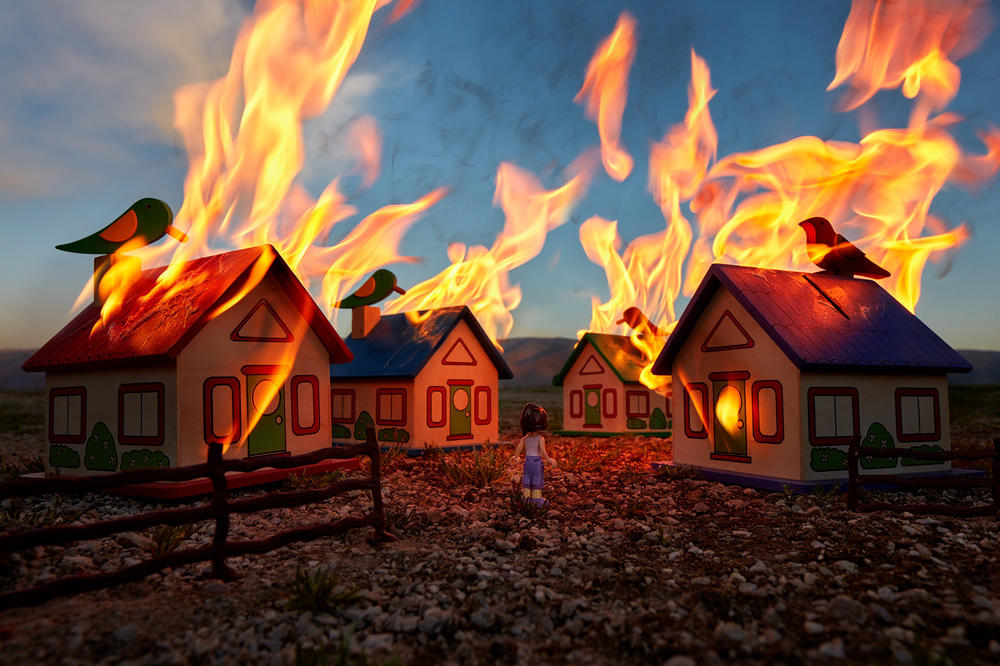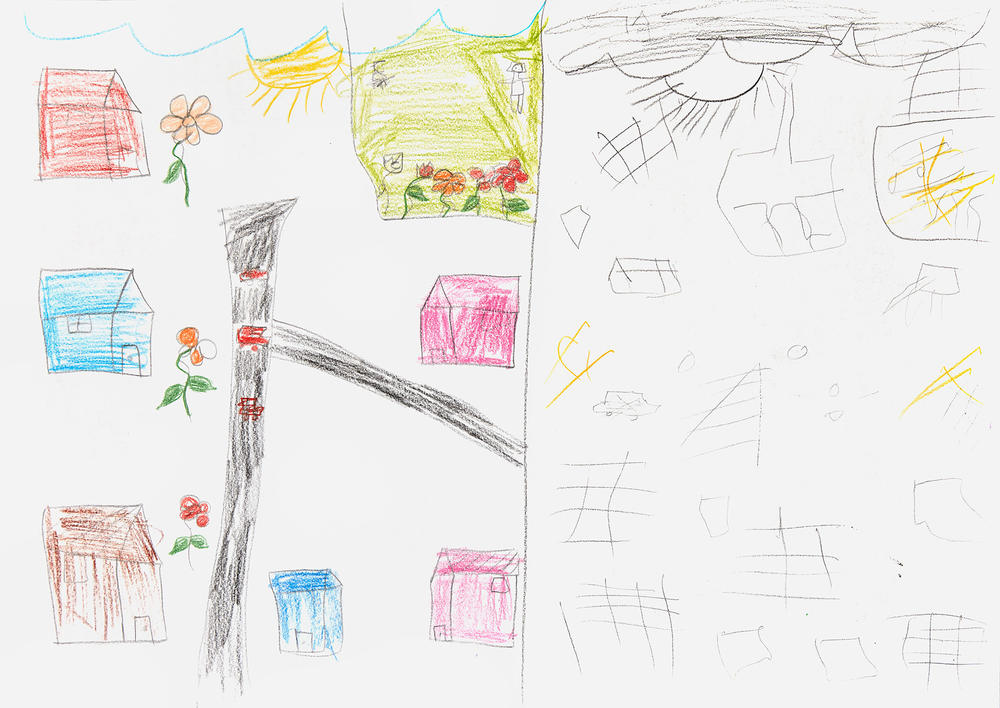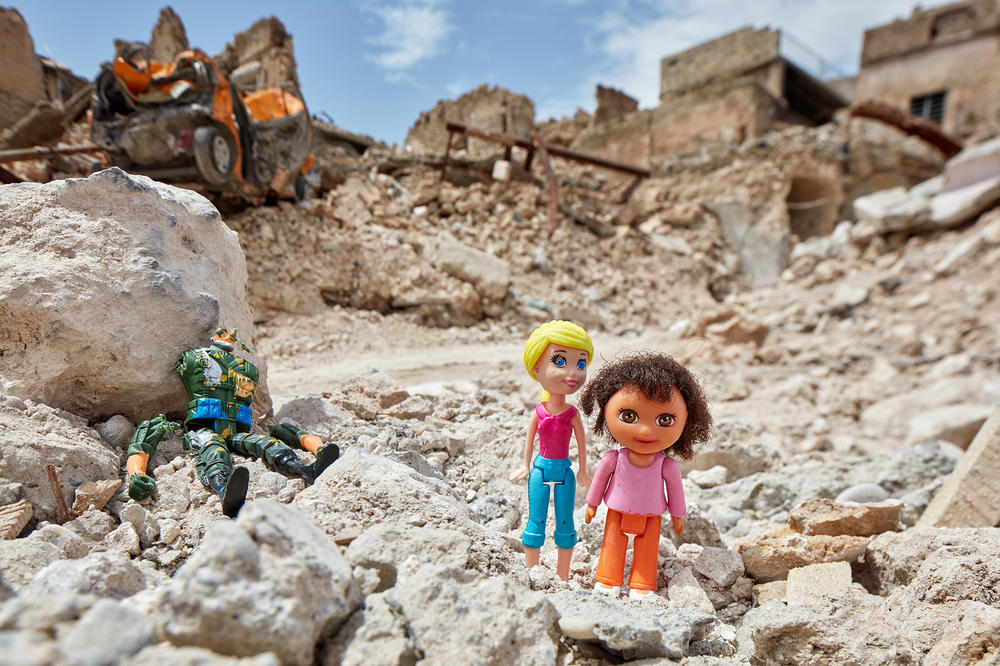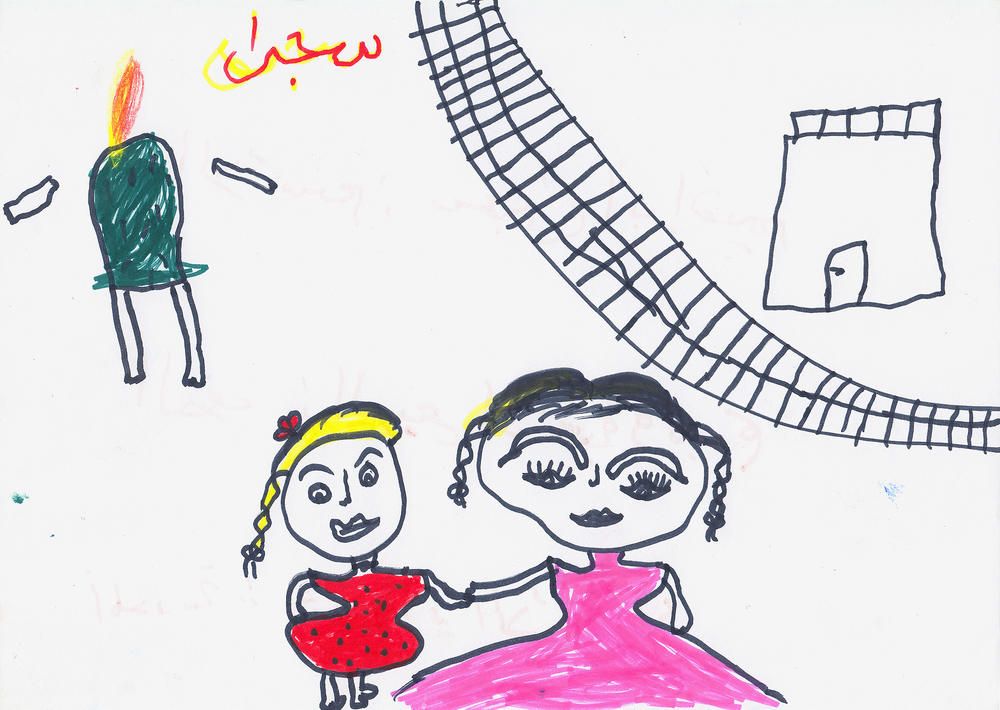Section Branding
Header Content
A photographer uses toys to reflect children's experiences in war
Primary Content
Photographer and visual artist Brian McCarty has had first-hand glimpses of the devastating toll war can have on a person ever since a visit to Croatia in 1996. Seeing the destruction from its war of independence made him think of how his loved ones were affected by an earlier war.
"I had thought about conversations with my father about Vietnam and his experience," McCarty said. "He was extremely reluctant to share anything really in-depth, personal."
Except, that is, when the two were playing with toy soldiers when McCarty was a kid. Then McCarty's father would tell him war stories about his grandfather, who served in World War II.
The memories of those childhood experiences and his time in Croatia gave McCarty an idea.
"I found letters that my father wrote home to my mom from Vietnam, like the first time he was shot at, or the Tet Offensive," McCarty said. "And decided to re-create those moments with a vintage 1960s, off-the-shelf G.I. Joe figure."
McCarty took photos of the scenes he re-created, which soon led to another idea of how he could use his art to help people heal from the horrors of war.
After developing his ideas for 14 years, McCarty started War Toys, an art project that later became a nonprofit organization where McCarty uses his photography and art therapy to help kids who have lived through a war.
"I learned about art therapy and play therapy and this idea of using War Toys as a way to bridge that gap between people who have experienced war and haven't experienced war," McCarty said.
The kids meet with a trained art therapist, who helps them talk about and draw their war experiences. McCarty then takes the child's drawings, travels to the places where the events happened, re-creates the traumatic images using toys, and then takes photos of the scenes.
War Toys has worked with children from countries such as Syria, Iraq and Israel. And McCarty is now working with children affected by the war in Ukraine.
"I think it's so important to focus on the stories of children from war, because people look past the rhetoric and see those moments," McCarty said. "That really is the takeaway, that we are all the same."
Copyright 2022 NPR. To see more, visit https://www.npr.org.
